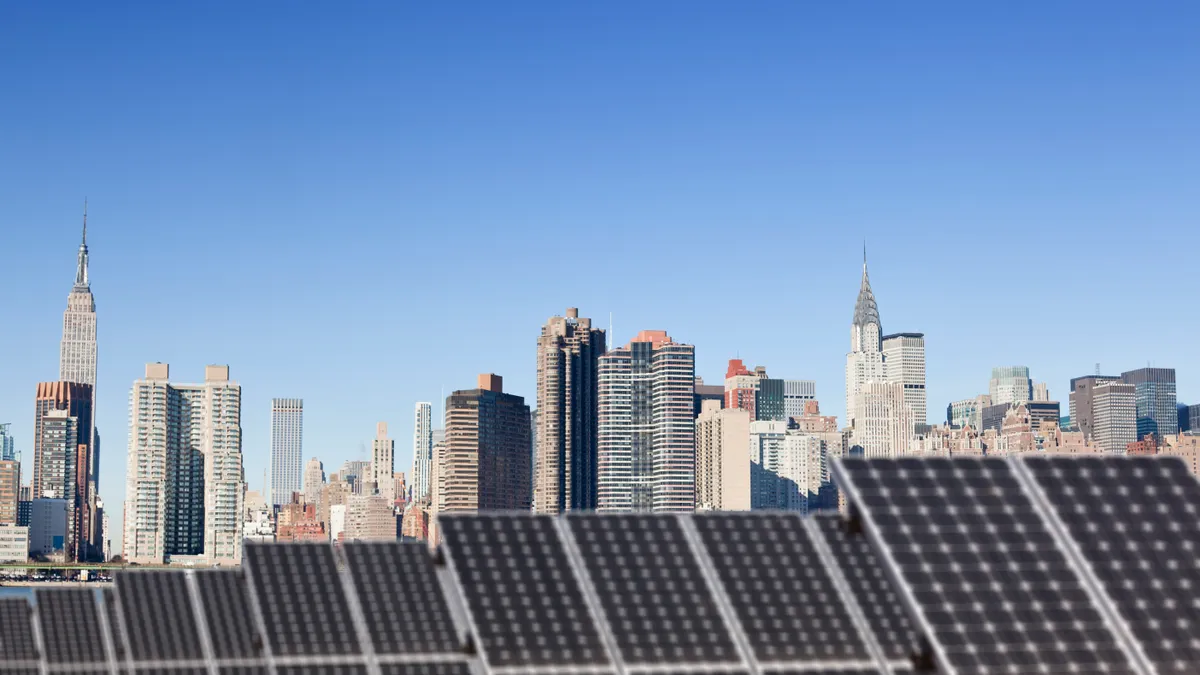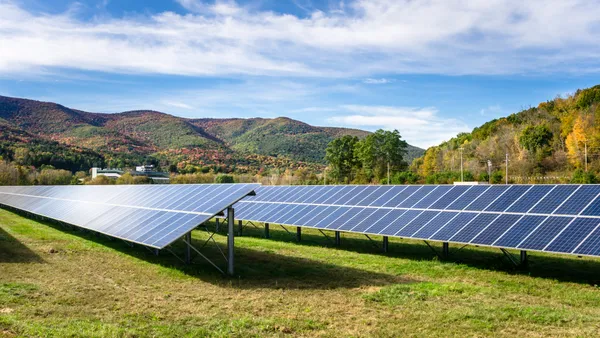Dive Brief:
- New York City council members introduced a bill on Feb. 28 that would mandate solar panel installations on public buildings in an effort to reduce the city’s carbon footprint and long-term energy costs.
- The legislation would require the Department of Citywide Administrative Services to install 100 megawatts of solar photovoltaic systems on the roofs of city-owned buildings by the end of 2025. The proposal calls for a total installation of 150 MW by 2030 on city-owned buildings and other properties, like parking lots and industrial areas.
- The legislation mandates that the DCAS work with the Mayor’s Office of Long-Term Planning and Sustainability to complete the solar installations. By the end of 2026, the DCAS must create a plan to meet the 2030 goal.
Dive Insight:
The legislation aligns with New York City Mayor Eric Adams’ goal of increasing city-owned solar generation and a green economy action plan released last month. That plan outlines more than 63 actions, including those to bolster buildings’ energy efficiency, procure innovative technology for retrofits and facilitate commercial retrofits.
The legislation, which prohibits the use of power purchase agreements to meet the solar PV system targets, has garnered support from Climate Jobs NY, a coalition of labor unions representing around 2.6 million workers.
City officials have indicated they prefer to use power purchase agreements, which facilitate a quicker and smoother transition to renewable energy by allowing a separate entity to install, operate and maintain solar infrastructure, Lenore Friedlaender, executive director of Climate Jobs NY, said in an interview. “In the non-PPA agreement scenario, the city would have to figure out who would handle the routine operations and maintenance of the solar,” she said. The goal of prohibiting power purchase agreements, however, is to create more job opportunities for unionized workers, including minimum wage workers and direct city workers who would be under an existing project labor agreement or union agreement, Friedlaender said.
“By taking advantage of the incentives in the Inflation Reduction Act, the City can install solar panels on public buildings across NYC while creating thousands of good jobs to get it all done,” Vincent Alvarez, president of the New York City Central Labor Council, AFL-CIO, and principal officer of Climate Jobs NY, said in a March 6 news release.
The legislation would impact “over 5,000 cleaners and handypersons we represent who maintain and clean public school buildings across New York City,” said Israel Melendez, vice president of Service Employees International Union Local 32BJ, which is part of the coalition of labor unions supporting the bill.
“Tackling the climate crisis will be a lot of work. We are proud to be part of this coalition to make sure that we not only seize the moment to take action, but also make sure that the jobs created are good jobs that lift up our communities,” Melendez told sister publication Facilities Dive.
The proposed mandate is commendable, but solar PV systems alone won’t fully decarbonize buildings, said Peter Christakis, executive vice president and general manager, east region, at renewables and energy efficiency firm Ameresco. “Instead, a holistic and technologically agnostic approach is necessary,” he said, pointing to the effectiveness of battery storage systems, energy efficiency upgrades and microgrids.
Separate bills recently introduced in New York City would require the development of energy storage systems on city-owned parking lots and the installation of cost-effective solar canopies at city-owned lots.













